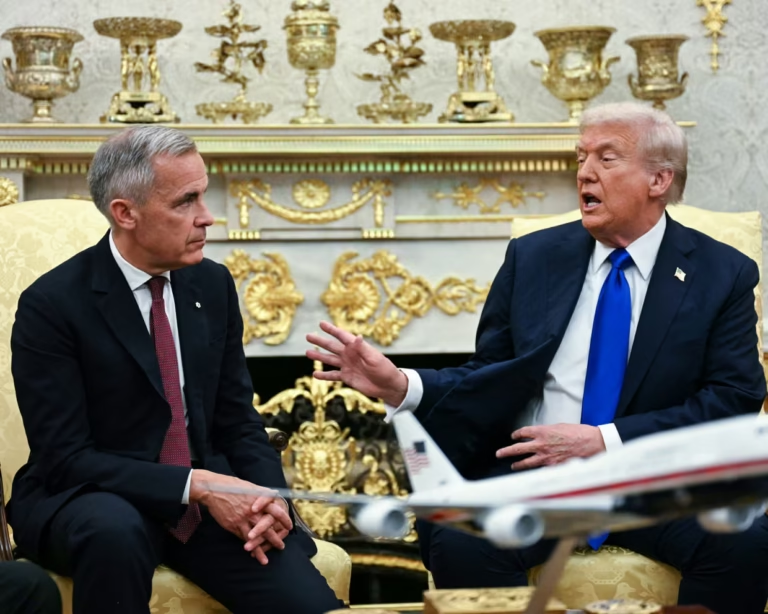President Donald Trump has announced a 10% increase in tariffs on Canadian goods, a move that adds new pressure to one of the world’s strongest trade partnerships. The decision was made public on Saturday through his Truth Social account, just hours before he headed to Malaysia for the ASEAN summit.
The new tariffs come as a direct response to an anti-tariff advertisement funded by the Ontario government. The ad, which cited former US president Ronald Reagan’s support for free trade, appeared to irritate Trump, prompting him to take action against Canada.
Speaking to reporters traveling with him, Trump said he had no plans to meet Canadian Prime Minister Mark Carney during the upcoming summit. The announcement signals growing friction between Washington and Ottawa, which had been working to stabilize trade ties following previous disputes over aluminum and dairy products.
The Ontario-sponsored advertisement reportedly aimed to promote open markets and highlight the benefits of trade partnerships between the two nations. However, Trump viewed it as a political attack against his administration’s tariff strategy.
In his post, Trump stated that the United States “will not tolerate unfair interference from foreign governments in American trade policy.” He described the new tariffs as a measure to protect US workers and industries.
The White House has not released details about which sectors will be affected by the new 10% tariff, but trade experts expect it to target key Canadian exports such as steel, aluminum, and lumber — products that have been at the center of earlier disputes.
Canadian officials have expressed disappointment over the announcement, saying that trade between the two countries benefits both sides. The government of Prime Minister Mark Carney has so far avoided direct confrontation, focusing instead on maintaining dialogue with Washington.
Trade analysts in Ottawa warned that new tariffs could hurt manufacturers in both countries, especially in industries with closely linked supply chains. Canada remains the United States’ second-largest trading partner, with billions of dollars in goods exchanged daily.
The tariff announcement came at a sensitive time as both leaders prepared to attend the ASEAN summit in Kuala Lumpur. The summit is expected to focus on regional security, trade cooperation, and economic growth in Asia.
Observers say the move could distract from broader diplomatic efforts and may complicate the US’s attempt to strengthen partnerships in the Asia-Pacific region. Analysts also note that the decision could give China an opportunity to strengthen its economic influence among ASEAN members.
This latest tariff action reflects Trump’s long-standing skepticism toward free trade agreements. Since returning to office, he has repeatedly emphasized the need to “rebalance” trade relationships that he claims have disadvantaged American workers.
The conflict with Canada is one of several trade-related challenges the administration is facing. Recent tensions with European allies over digital taxes and with Mexico over agricultural imports have also tested Washington’s trade diplomacy.
Economists caution that continued tariff increases could raise prices for US consumers and disrupt business operations that depend on imported materials. However, Trump supporters argue that such measures are necessary to ensure fair treatment for American industries.
As the ASEAN summit unfolds, attention will likely turn to how both leaders handle their strained relationship in public. While a formal meeting between Trump and Carney seems unlikely, experts believe informal interactions or behind-the-scenes talks could help ease tensions.
For now, the US-Canada trade tariffs issue remains a key flashpoint in North American relations. Businesses on both sides of the border are watching closely to see whether diplomacy or further escalation will define the next phase of this economic standoff.







